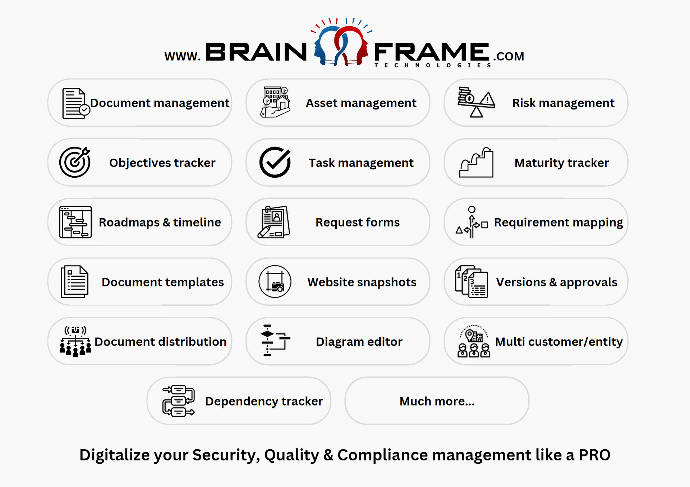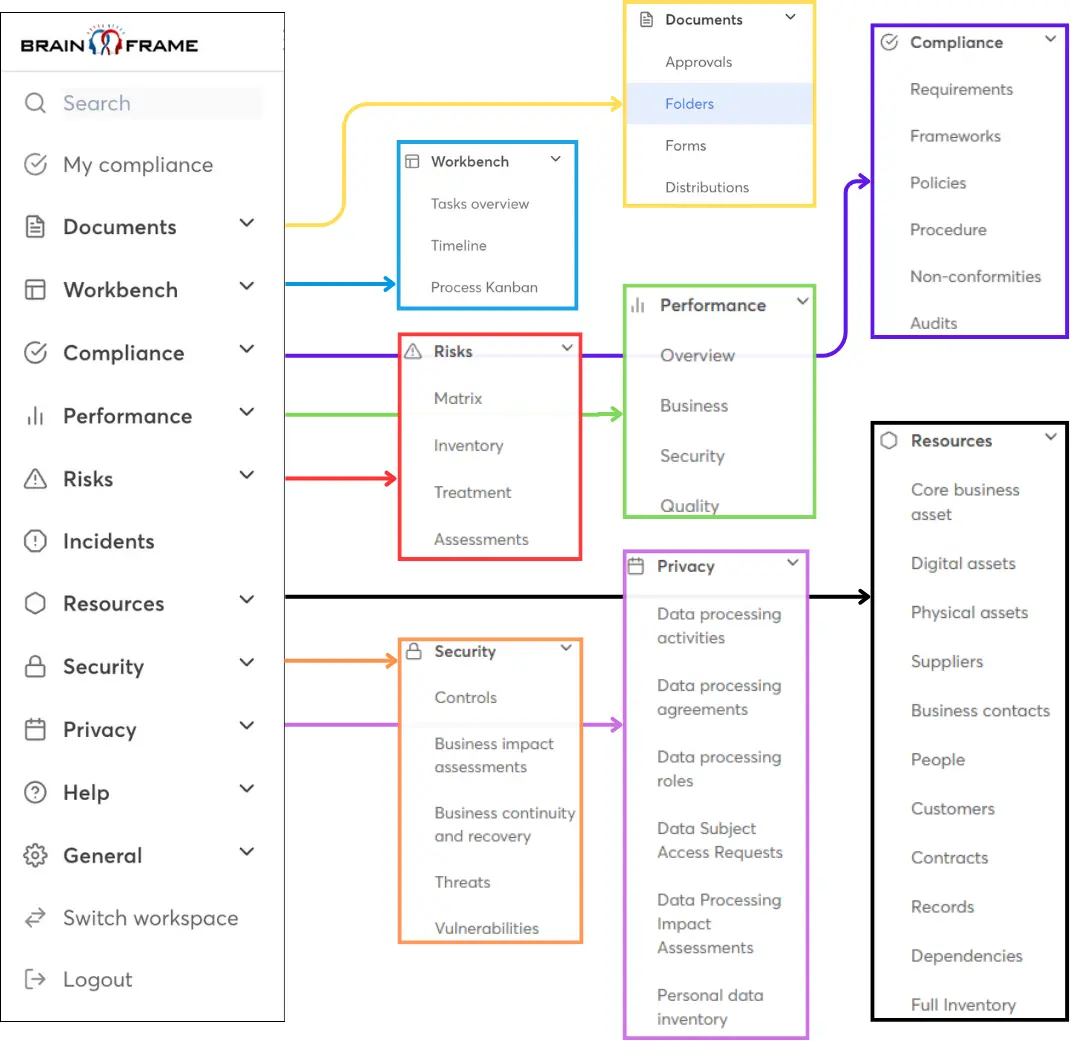Understanding the Fundamentals of GRC Management
In today's rapidly evolving business landscape, organisations encounter an array of challenges, spanning from regulatory compliance to managing operational risks effectively. To address these challenges, they rely on Governance, Risk, and Compliance (GRC) frameworks, which offer a structured approach to navigating complexities and ensuring organisational integrity.
What is GRC Management?
GRC Management represents an integrated methodology aimed at aligning an organisation's objectives, mitigating risks, and ensuring compliance with relevant regulations and standards. It encompasses a range of activities and processes designed to optimise decision-making, enhance risk awareness, and foster a culture of compliance within the organisation.
Core Components of GRC Management:
- Governance: At the heart of GRC Management lies governance, which involves establishing the structure, processes, and mechanisms for decision-making and accountability within an organisation. This includes defining roles and responsibilities, establishing policies and procedures, and fostering transparency and integrity in all operations.
- Risk Management: Risk management is a critical component of GRC Management, focusing on identifying, assessing, and mitigating risks that may impact the achievement of organisational objectives. This involves analysing both internal and external threats, evaluating their potential impact, and implementing controls and strategies to manage or mitigate risks effectively.
- Compliance: Compliance entails adhering to relevant laws, regulations, standards, and internal policies that govern the organisation's operations. It involves continuously monitoring regulatory requirements, ensuring adherence to industry standards, and implementing controls to mitigate compliance risks.
Importance of GRC Frameworks:
GRC frameworks provide organisations with a systematic approach to managing governance, risk, and compliance activities. These frameworks serve as guidelines or blueprints for implementing effective GRC Management practices and ensuring organisational resilience. A framework, in this context, refers to a structured set of guidelines, principles, and practices designed to help organisations achieve specific objectives, manage risks, and ensure compliance with relevant regulations and standards.
Some widely recognised GRC frameworks include:
- ISO/IEC 27001: Is an international standard for information security management systems (ISMS), providing a systematic approach to managing sensitive company information, ensuring its confidentiality, integrity, and availability.
- NIST CSF Cyber-security Framework: Developed by the National Institute of Standards and Technology (NIST), the NIST CSF provides organisations with a framework for managing and reducing cyber-security risks. It offers a flexible, risk-based approach to improving cyber-security posture and resilience.
- PCI DSS (Payment Card Industry Data Security Standard): PCI DSS is a set of security standards designed to ensure that all companies that accept, process, store, or transmit credit card information maintain a secure environment. Compliance with PCI DSS helps prevent data breaches and protects sensitive cardholder information.
- COBIT (Control Objectives for Information and Related Technologies): COBIT is a framework for the governance and management of enterprise IT. It helps organisations align IT with business objectives, establish control objectives, and manage risks related to information and technology.
These frameworks offer organisations a structured approach to addressing complex challenges, streamlining operations, enhancing decision-making, and maintaining accountability. They provide a standardised methodology for implementing best practices, enabling organisations to improve operational efficiency, mitigate risks, and ensure compliance with confidence.
Embracing Brainframe for GRC Management: In today's complex regulatory environment, GRC Management is essential for organisations to navigate risks, ensure compliance, and achieve their strategic objectives. Brainframe offers a comprehensive solution that streamlines GRC processes, enhances risk management, and ensures regulatory compliance. By providing centralised documentation, risk assessment tools, and compliance tracking mechanisms, Brainframe empowers organisations to effectively implement GRC Management practices and drive efficiency, effectiveness, and strategic alignment within their operations. Additionally, with quick access to a network of specialists for elements where support is needed, Brainframe ensures that organisations have the expertise they require to address any challenges they may encounter along their GRC journey.
Key Benefits of Brainframe:
- Centralised Documentation: Brainframe offers a centralised platform for managing all GRC-related documentation, ensuring easy access and visibility across the organisation.
- Risk Assessment Tools: Brainframe provides context-aware risk assessment tools, offering a nuanced view of risks based on department, product, business unit, and other relevant contexts. This allows organisations to tailor risk management strategies to specific areas of operation, enhancing effectiveness and efficiency.
- Compliance Tracking Mechanisms: Brainframe provides compliance tracking mechanisms to monitor adherence to regulatory requirements and standards, helping organisations stay compliant and avoid potential penalties.
- Streamlined Processes: By streamlining governance processes, risk assessments, and compliance activities, Brainframe enhances operational efficiency, reduces redundancies, and optimises resource allocation.
- Documentation Tools: Brainframe allows you to bring your existing documents and immediately augment them with all our features, ensuring seamless integration and utilisation of existing resources.
- Continuous Improvement: Brainframe supports continuous improvement initiatives by facilitating ongoing monitoring, measuring performance against relevant metrics, and identifying areas for enhancement.
Conclusion: In conclusion, GRC Management plays a vital role in helping organisations navigate complexities, mitigate risks, and ensure adherence to regulatory requirements. By embracing GRC frameworks and leveraging solutions like Brainframe, organisations can establish robust governance structures, manage risks effectively, and maintain compliance with confidence. With its comprehensive features and user-friendly interface, Brainframe empowers organisations to achieve their GRC objectives efficiently and effectively.
Stay tuned for more insights on specific aspects of GRC Management and best practices for implementation with Brainframe.

Start for free now
Like with GDPR, don't wait until the last moment because this will only be more expensive and put unneeded stress on your teams!
